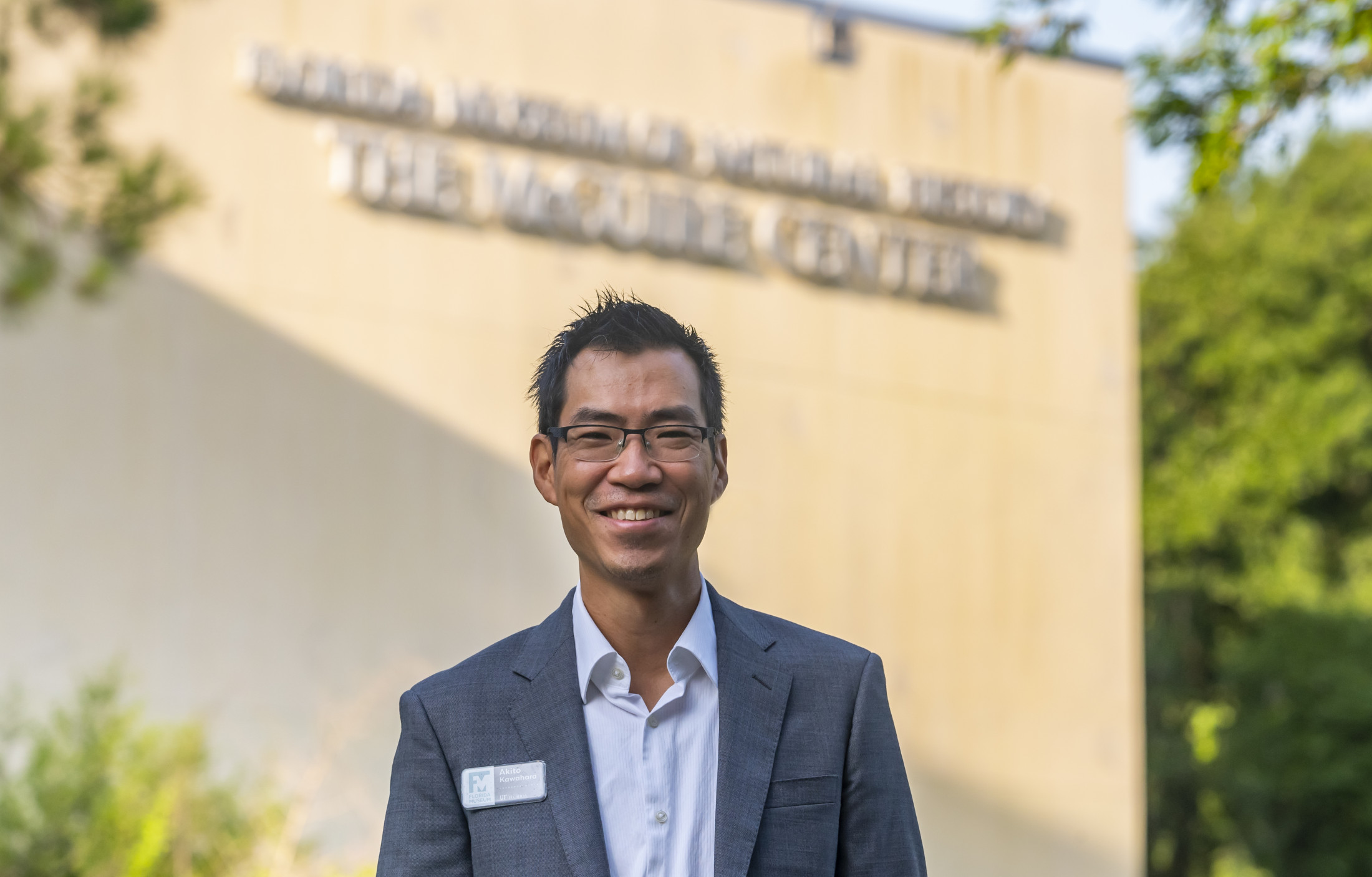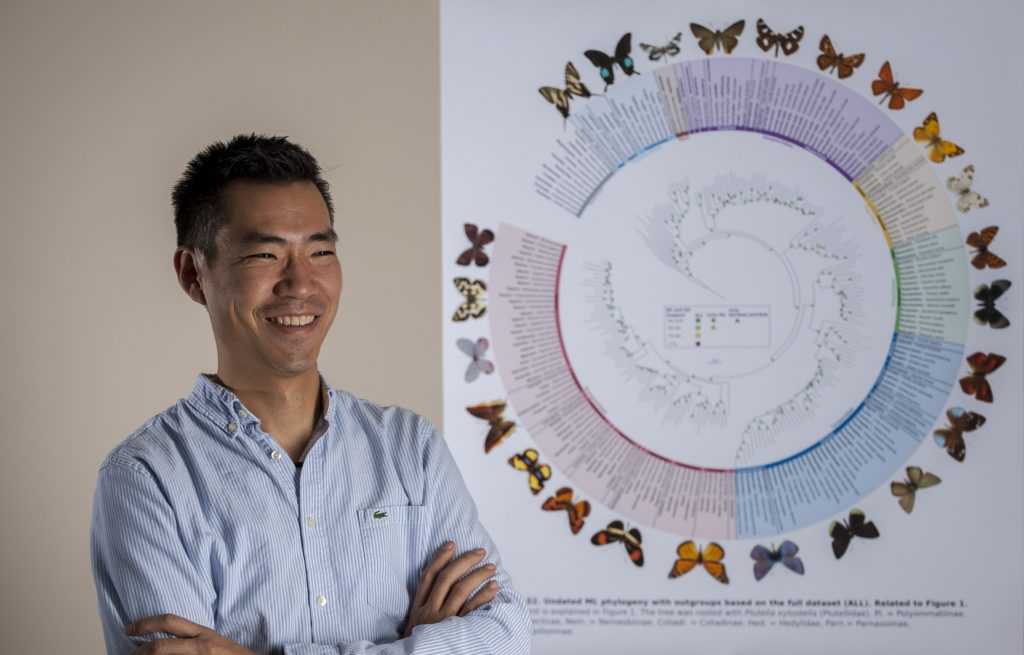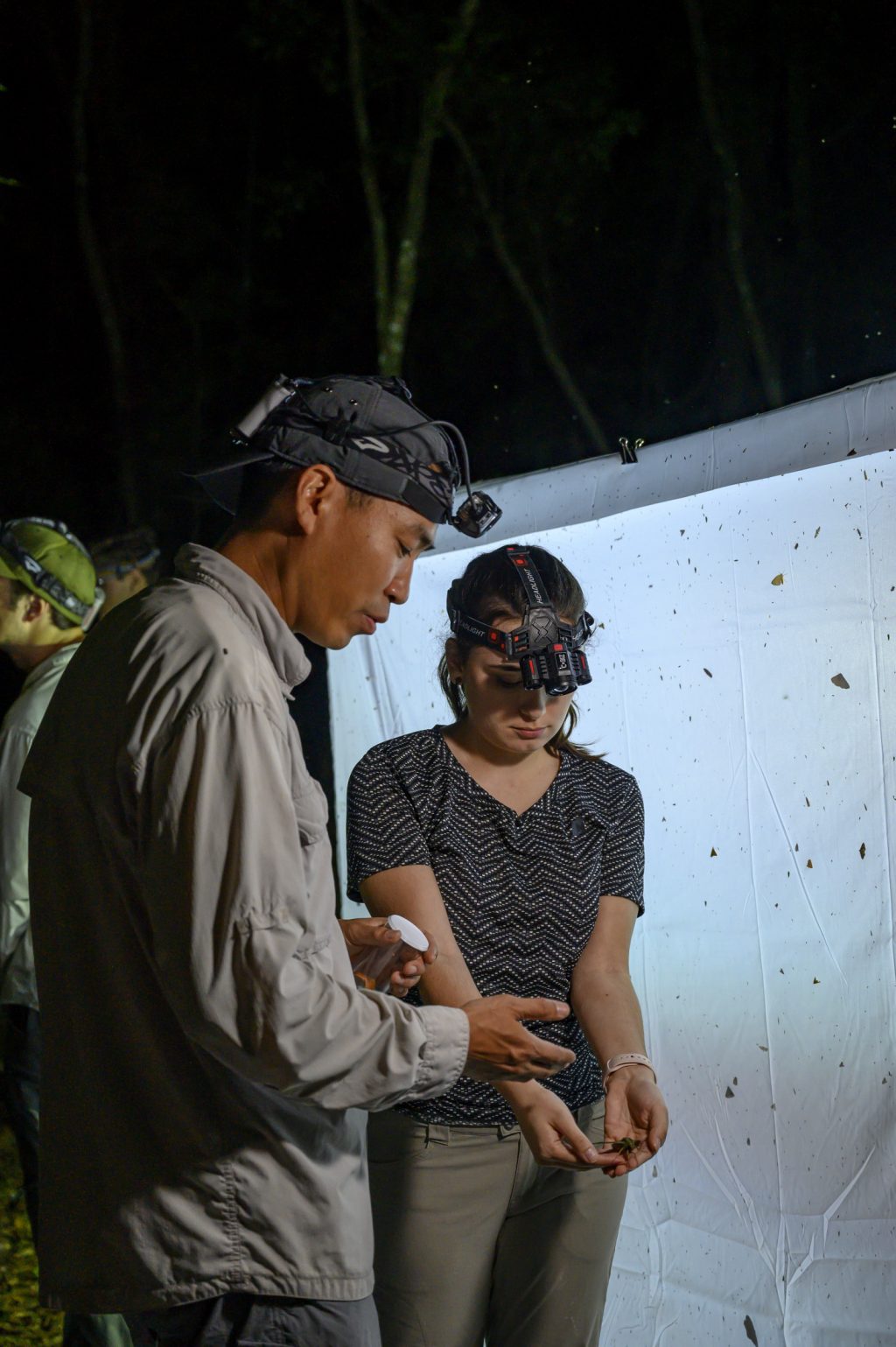The Florida Museum of Natural History has named Akito Kawahara as the new director of the McGuire Center for Lepidoptera and Biodiversity, a leading institution in butterfly and moth research and education.
Kawahara studies the diversity and evolution of moths and butterflies and succeeds Keith Willmott as director. In his new role, Kawahara will help promote the continued growth of the McGuire Center and its collections, which contain more than 10 million specimens and are used by students and scientists around the world.
“What Keith has done with the Center is incredible. One of the things that I really would love to do is expand the Center and make it even more of a global institution than it is now,” Kawahara said. “Because we’re on the University of Florida campus, we have a special strength that many other institutions lack. There is an active group of people working on the collection—not only staff, but also students that contribute to its growth.”
The McGuire Center will remain committed to innovation under Kawahara, who says “institutions need to move forward with the developments of the time.” It has already embraced newer research fields like genomics, CT-scanning and the use of modern technologies like the citizen science app iNaturalist, which launched in 2011 and encourages users to post photos of plants and animals that they see. Kawahara says this not only helps people learn about the world around them but also provides valuable data for researchers.

Florida Museum Photo by Jeff Gage
Kawahara’s enthusiasm for citizen science reflects his eagerness to expand the McGuire Center’s focus on public engagement. While it is primarily a research institution, it is also highly integrated with the museum’s exhibits—something Kawahara sees as an opportunity to educate more people and foster excitement for butterflies and moths.
“The McGuire Center is arguably the foremost institution in the world devoted to the study of butterflies and moths, and it’s fitting that it be led by one of the leading Lepidopterists of our generation,” said Douglas Jones, director of the Florida Museum. “In addition to his vigorous research program involving the evolution, behavior and diversification of the Lepidoptera, Dr. Kawahara is committed to public outreach on such topics as reversing current insect declines and expanding the public’s excitement around insects and nature. All of these factors make Dr. Kawahara the right person for this important role.”
Kawahara did not always appreciate nature like he does today. In fact, as a kid he was afraid of insects. When Kawahara’s father noticed this, he decided to buy him a butterfly net and bring him out into nature more. It was these positive early childhood experiences, Kawahara said, that helped him notice and get excited about the world outside.
He grew up visiting the American Museum of Natural History in New York City and even volunteered there when he was in middle school. Working in the collections proved to be a formative experience and opened his eyes to a professional career path he hadn’t realized existed before.
“I saw my first butterfly in Japan, and I still have the butterfly book my dad bought me. Later, getting to visit a huge museum and work with specimens in New York, I realized there were tons of insects and amazing scientists who study them.”
Over the course of the career he has built since then, Kawahara has researched how butterflies evolved and the interactions between moths and bats, such as how moths use ultrasound to jam bat sonar and how Luna moths use their tails to misdirect attacks. He has future plans to learn how moth and butterfly genetics influence observable traits like the formation of silk—a material that is understudied despite being crucial for fashion, industry and medicine.
Kawahara also sees an opportunity for the McGuire Center’s research to place an increasingly strong emphasis on climate change. Butterflies and moths are important indicators of the wellbeing of ecosystems, Kawahara says, so it’s important to pay attention to how their diversity and abundance change over time.
Source: Akito Kawahara, kawahara@flmnh.ufl.edu
Writer: Jiayu Liang, jiayu.liang@floridamuseum.ufl.edu, 352-294-0452

